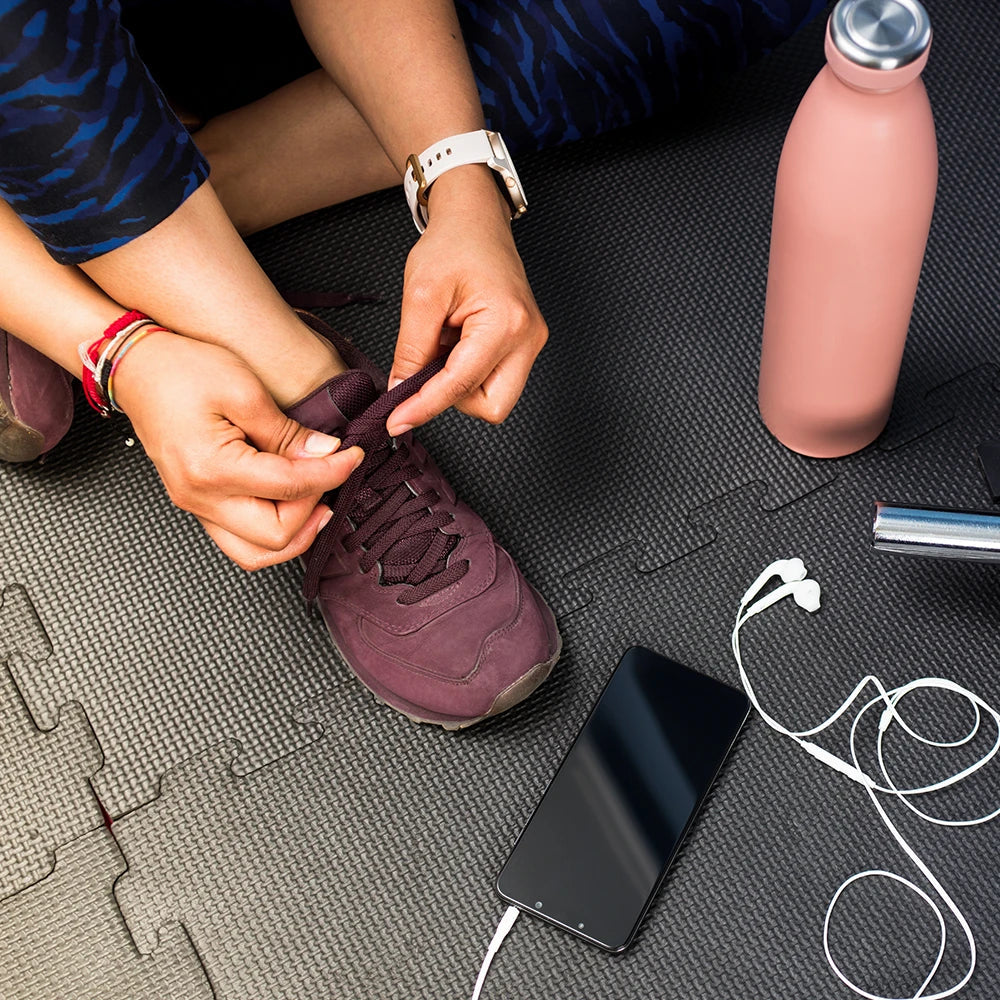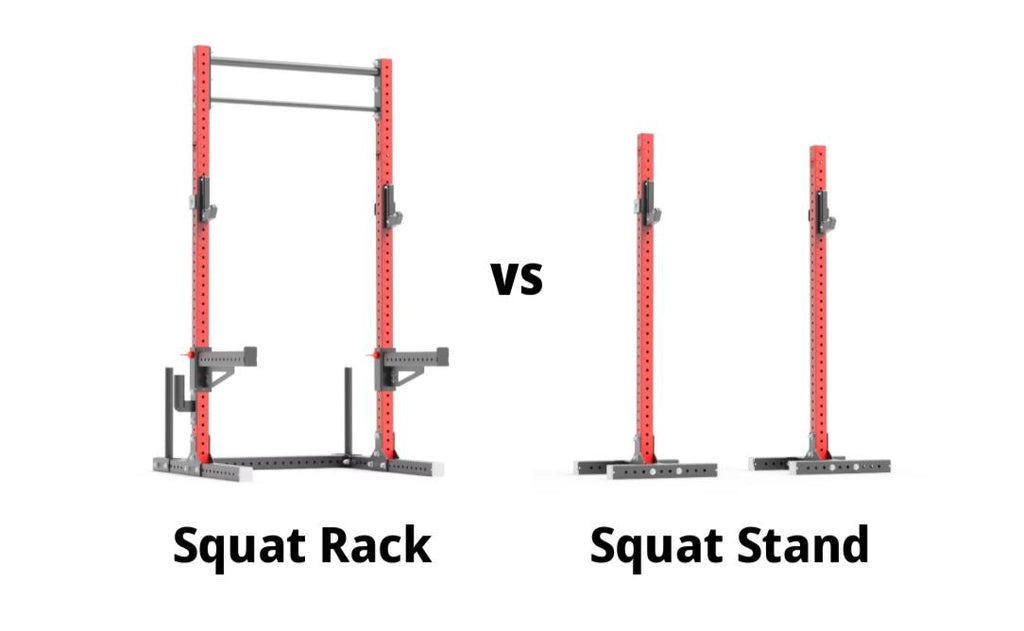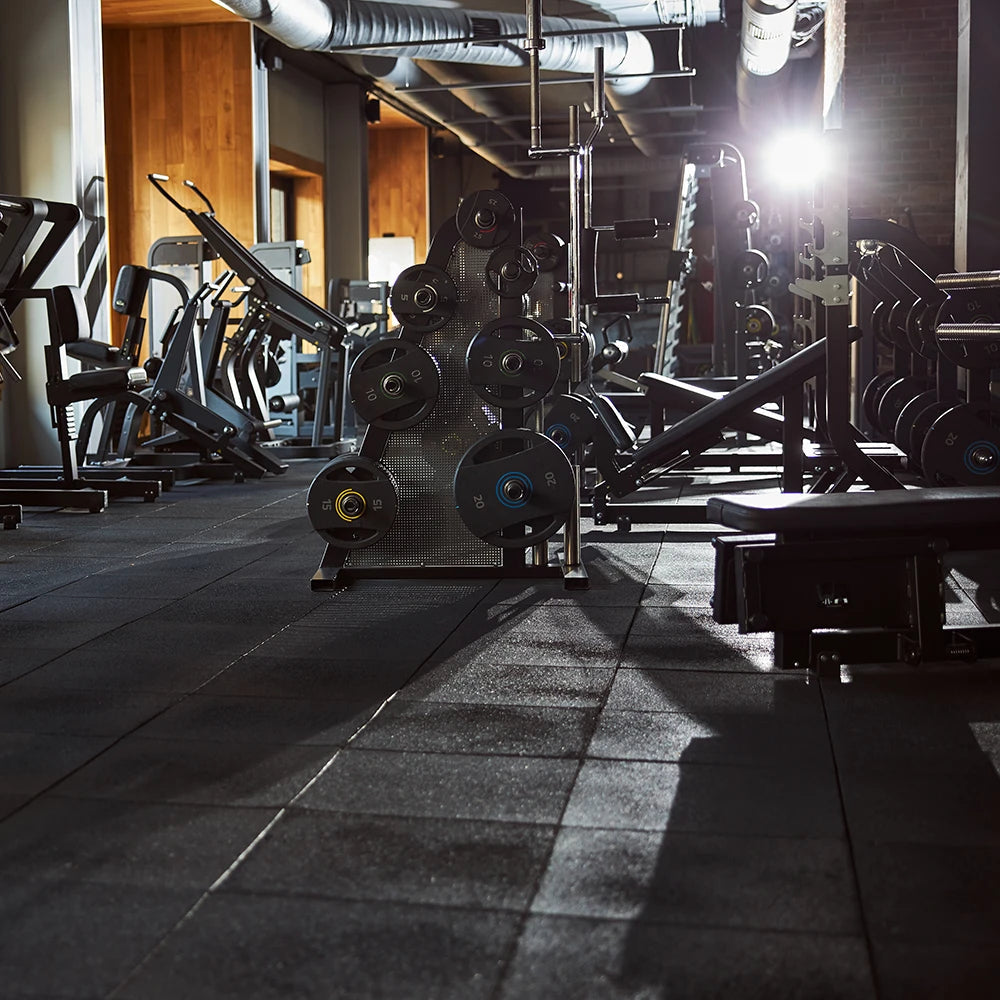Revêtement de sol pour salle de sport à domicile ou commerciale

Comprendre les différences d'épaisseur
En matière de revêtement de sol pour salle de sport, l'épaisseur peut faire toute la différence, notamment entre les installations résidentielles et commerciales. L'épaisseur des revêtements de sol pour salle de sport à domicile varie généralement de 10 à 20 mm, ce qui est idéal pour la plupart des entraînements occasionnels.
Les salles de sport commerciales, quant à elles, ont besoin d'un revêtement de sol un peu plus robuste. Elles utilisent généralement des dalles de 30 à 40 mm d'épaisseur, conçues pour une utilisation plus intensive.
Donc, si vous faites simplement des exercices légers à modérés à la maison, tout ce qui dépasse 20 mm est probablement excessif, à moins que vous ne souleviez des charges lourdes.
Si vous envisagez de vous lancer sérieusement dans l'haltérophilie à la maison, vous pourriez envisager d'investir dans un rack à squat robuste. Ce type d'installation peut nécessiter une protection de sol plus épaisse pour supporter le poids supplémentaire en toute sécurité.
Composition du matériau : mousse ou caoutchouc
Pour le revêtement de sol des salles de sport, les salles de sport à domicile privilégient souvent la mousse haute densité. C'est un excellent choix pour les espaces d'entraînement légers et modérés.
Les salles de sport commerciales, quant à elles, nécessitent un revêtement de sol plus robuste. Le revêtement en caoutchouc est ici la solution idéale, car il résiste à une utilisation intensive et aux chutes de poids. Dans les zones de musculation commerciales, le caoutchouc est essentiel pour sa durabilité supérieure.
Si vous recherchez une durabilité accrue pour votre salle de sport à domicile, pensez à équiper votre sol de plaques de protection en caoutchouc . Celles-ci protégeront vos surfaces lors des exercices lourds, vous offrant ainsi une plus grande tranquillité d'esprit.
Le rôle de la sous-couche dans les revêtements de sol des gymnases
Dans les salles de sport à domicile, la sous-couche n'est généralement pas une priorité. Son coût et ses avantages incertains dans les environnements d'entraînement plus légers font souvent qu'elle est complètement ignorée.
Les salles de sport commerciales, quant à elles, prennent la sous-couche très au sérieux. Elle est essentielle pour protéger le sol et absorber le bruit et les vibrations des chutes de poids.
Dans les zones à fort trafic, une sous-couche peut être essentielle pour insonoriser et protéger la structure du sol d'une salle de sport. Si vous construisez une salle de sport à domicile, un banc de musculation peut compléter votre installation, garantissant confort et stabilité lors de vos différents exercices.
Considérations relatives au sous-plancher : renforcement et isolation
Dans les salles de sport commerciales, un sous-plancher renforcé est souvent installé. Il offre une isolation et une protection supplémentaires contre les charges lourdes.
Les salles de sport à domicile, en revanche, ne nécessitent généralement pas de sous-plancher. Les dalles en caoutchouc sont généralement installées directement sur le sol de base, ce qui convient parfaitement aux entraînements modérés.
Dans les environnements commerciaux, un sous-plancher est essentiel pour améliorer la durabilité et l'absorption des chocs. Pour les salles de sport à domicile, les ensembles d'haltères constituent un complément polyvalent, fonctionnant avec ou sans sous-plancher grâce à leur faible impact.
Contrôle du son et des vibrations
Les salles de sport commerciales accordent une grande importance à la réduction du bruit et des vibrations dues aux chutes de poids constantes. Il est donc essentiel d'utiliser un revêtement de sol et une sous-couche plus épais.
Les salles de sport à domicile sont moins susceptibles de subir de telles vibrations et un bruit aussi important. Un revêtement de sol conçu pour des entraînements plus silencieux est souvent suffisant.
Si l'insonorisation est une préoccupation pour vous, des dalles et sous-couches en caoutchouc plus épaisses peuvent être utiles. Cependant, ce n'est pas aussi nécessaire dans la plupart des habitations.
Envisagez d’intégrer des kettlebells réglables à votre routine pour un entraînement de force à faible impact qui fonctionne bien avec les sols de salle de sport à domicile standard.
Choisir le bon revêtement de sol pour votre salle de sport
Les revêtements de sol de gymnase commerciaux sont conçus pour des performances élevées, offrant une durabilité, une isolation et un contrôle acoustique supérieurs.
Les sols de salle de sport à domicile n'ont pas besoin d'être aussi résistants. Vous pouvez opter pour des options plus économiques et plus légères, comme de la mousse ou des dalles en caoutchouc plus fines.
Pour des séances d'entraînement occasionnelles ou une utilisation plus légère, les revêtements de sol pour salle de sport à domicile peuvent équilibrer durabilité et rentabilité.
Pour garantir un maintien optimal pendant l'haltérophilie, pensez à utiliser une ceinture de musculation . Cela protégera à la fois votre corps et votre sol.


